Aloe ferox
| Botanical Name | Aloe ferox |
|||||||||||
| Family | Aloeaceae - The aloe family. |
|||||||||||
| Pronunciation | AL-oh FER-oks |
|||||||||||
| Common Name(s) |
English: Bitter aloe
Afrikaans: Bitteraalwyn; Bergaalwyn
IsiXhosa: umhlaba; iKhala
IsiZulu: iNhlaba; Umhlaba
Sesotho: Hlaba; Lekhala La Quthing
|
|||||||||||
| Plant Group |
|
|||||||||||
| Plant Size |
|
|||||||||||
| Position |
|
|||||||||||
| General Information |
|
|||||||||||
| Specific Information | Aloe ferox is a tall, single stemmed aloe with a distribution range that covers a wide variety of habitats and results in marked physical differences as well as differences in flowering time. The dull green to bluish leaves of Aloe ferox are edged with reddish spines and are arranged in a rosette. It adjusts well to the garden environment. The following is based on observation, not on any scientific study, but it sounds logical: On a recent visit to a nearby Game Reserve it was pointed out that although the surrounding hills are literally swamped with Aloe ferox, (almost to the exclusion of any other vegetation), there are few to be found in the reserve. The reason for this is that the aloe population is kept down by the elephants which eat them. Outside the reserve, however, there is no longer this natural limitation and the aloe appears to have become an invasive presence on many hill sides. |
|||||||||||
| Ad Break | ||||||||||||
| Flowers | ||||||||||||
| Description | dense erect spikes on branched or candelabra-like flower heads |
|||||||||||
| Season |
|
|||||||||||
| Colour |
|
|||||||||||
| Growth Rate |
|
|||||||||||
| Plant Uses |
|
|||||||||||
| Distribution and Habitat | south Western Cape, through the Eastern Cape, to southern Kwazulu-Natal, the south eastern corner of the Free State and southern Lesotho, in bush or open areas, on hillsides and in semi-karoid scrub |
|||||||||||
| Planting Suggestions | Grow Aloe ferox in well-drained soil to which a little bone-meal has been added. Mulch well once a year with compost. If given every opportunity to become strongly established, Aloe ferox will need very little attention. A healthy aloe is less likely to attract fungus, scale or aphids. Watch out for snout beetle damage (see http://kumbulanursery.co.za/blog/snout-beetle-damage-done-to-aloes) Please ignore the following link as it does not pertain to this species. |
|||||||||||
| Medicinal Uses | The leaves of Aloe Ferox contain two juices: the yellow bitter sap which is used as a laxative, and the white aloe gel which is used in health drinks and skin care products. The sap is known to be toxic to pregnant and breast feeding mothers. Home remedies with Aloe ferox: Cuts, wounds, burns, pimples and skin problems: apply the sap over the affected parts. Spleen disorders: take a tablespoon of gel with a pinch of turmeric, twice a day, one hour after food. Indigestion, cancer, HIV/AIDS: take a tablespoon of fresh gel, twice a day, one hour after food. Constipation: mix a spoonful of gel in a cup of lukewarm water and take it one hour after dinner. |
|||||||||||
| Ad Break | ||||||||||||


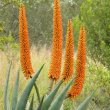
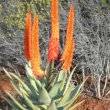

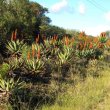

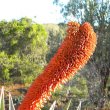


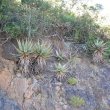



Comments
Aloe Ferox--seedling depth
Dear Lorraine
Perhaps you would share some information on the seedling depth of this plant. There is no information on how deep to plant the seeds and how far apart they should be placed.
I received the seeds as a gift and cannot find enough information on the internet, for the best soil(perhaps cactus soil) and (vermicutlite/perlite). If so what would be the ration and what kind of fertilizer do I use? I would like to keep this as a houseplant, with plenty of sunlight.
WOuld appreciate any information that you could send me.
Thank You for Your Time and Consideration---debra
Planting aloe seeds
Hi Debra
I have had good success with any well drained soil, but, although I have never tried it myself, cactus soil is reportedly the best for succulents. You won't need to add anything else. I just sprinkle the seeds randomly over the soil and barely cover them with some fine sand or whatever medium I am using. If you have only a few seeds you can place them about 2 cm apart from each other. Once the babies are sturdy, well-anchored and starting to crowd, they can be transplanted to pots. Keep the seeds just moist - the medium will drain fast so keep tabs on the seeds so that they do not dry out completely. Keep them warm but in good light - a little direct sun will not harm them.
I have never bothered with fertiliser for aloes or succulents as they do not need too much in the way of nutrients, so I can't give you specific details here. From what I can recall from my research, a liquid, seaweed based fertiliser is often used at half strength and is applied once or twice a year.
If the seeds are fresh, you should have good germination. If nothing comes up it is probably because the seeds are no longer viable - not because you did something wrong.
Hope this covers all your questions and good luck with your results.
Kind regards
Lorraine
!aloe ferox
Dear Lorraine
Is it safe to apply the gel of the aloe ferox to my face. I have read many posts and articles but im still hesitant.
Thank you
Z
Use of Aloe ferox
Hi Z
As I have had no medical, scientific or traditional training in this matter, I am unable to answer your question.
Kind regards
Lorraine
ALoe ferox
Hi Lorraine
We found a whole lot of Aloe ferox on the side of the road where workers were clearing for a road. They have been chopped off near the base, will they regrow if we just plant them in suitable soil?
THanks
Julie
Ferox Freebie!
Hi Julie
Yes they will - here's how I would go about it:
Cut the base of the stems cleanly if they have been hacked. If the aloes have their 'aprons', I clear half a meter off the lower stem. Leave them in a shady place for two weeks to a month, so that the ends dry out very well. If this step is left out, rotting is almost guaranteed to occur.
Aloes are very shallowly rooted plants, so the hole is dug no deeper than about 40 cm. Any deeper and rotting is more likely take place. If the soil is heavy or slow-draining, fill holes about half way with clean river sand to prevent water-logging and aid the formation of roots. (I've never bothered as my soil is naturally very well drained and I am inherently lazy). Plant firmly but don't stamp and soil down too much or the soil becomes compacted and makes life difficult for the new roots.
As these aloes may be quite tall, they are bound to fall over in the slightest breeze, because they are not deeply planted. To counteract this, I collect 3 to 4 stout sticks, about 5 cm+ in diameter, per plant. As each aloe is planted, we, (this is not a job to do on your own!), jam the sticks with one end in the ground about half a meter away from the stem, around the aloe, and the other end below the leaves around the stem - like poles for a tepee. I leave these on for six months to a year before removing them, depending on the height and root strength of the plant.
Keep the soil slightly moist, never very wet or very dry. You can use a rooting hormone but I have never bothered to do this with aloes. They should be rooted in about 4 months - maybe longer depending on local circumstances. I can't be sure because I have never pulled one out to see if has rooted.
Sounds like a lot of work but I have never lost an aloe. Keep me posted and send pics.
Kind regards
Lorraine
ALOE FEROX
Good day
My Aloe ferox has only bloomed once. What can cause it not to bloom again?
Kind regards
Carol
Aloe not flowering
Hi Carol
I can't make any diagnosis with so little information. How old is the plant, when last did it flower, where is it situated, where are you situated, how much water does it get...?
Kind regards
Lorraine
Discuss this plant
Share knowledge, ask a question or give an experience.